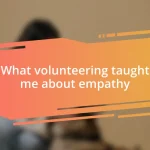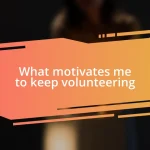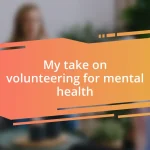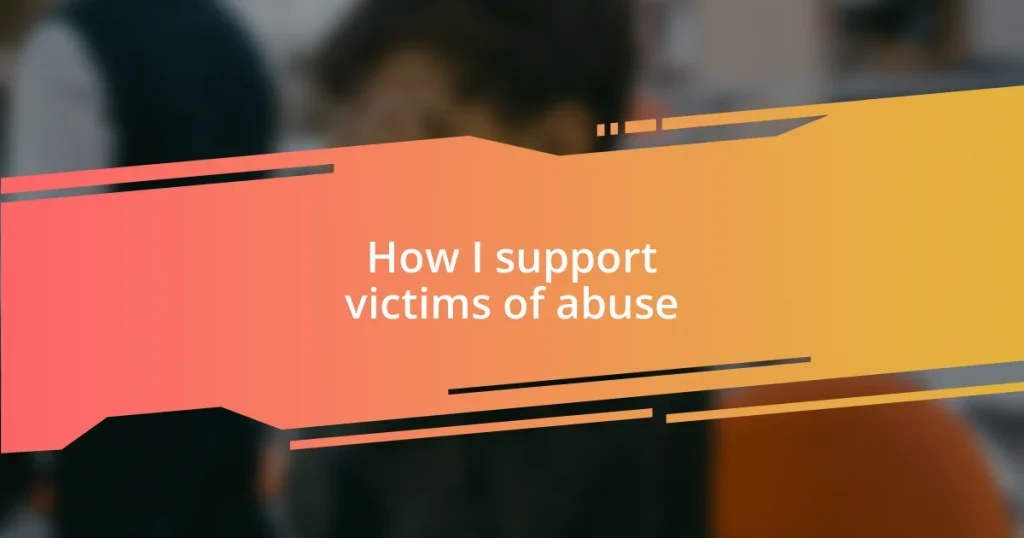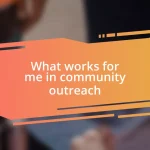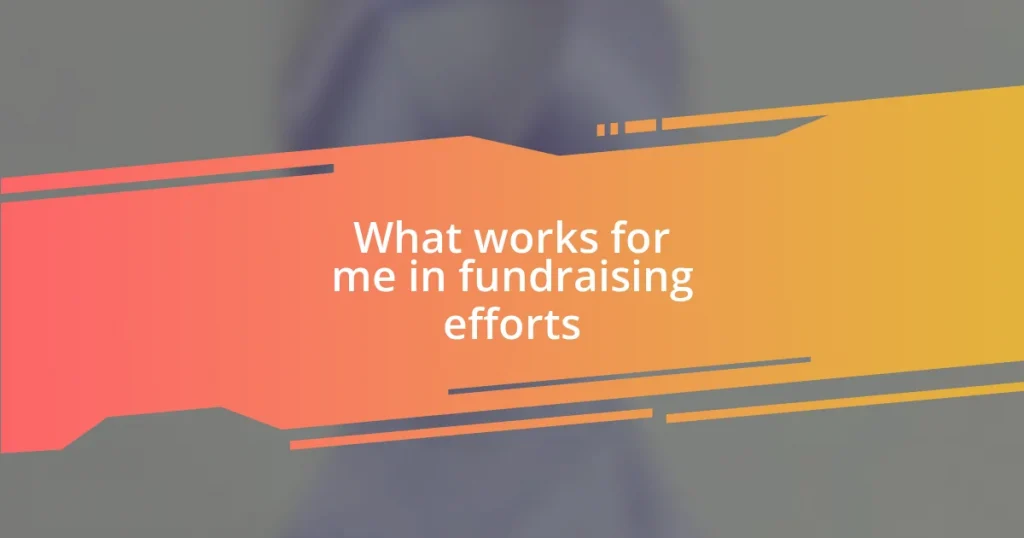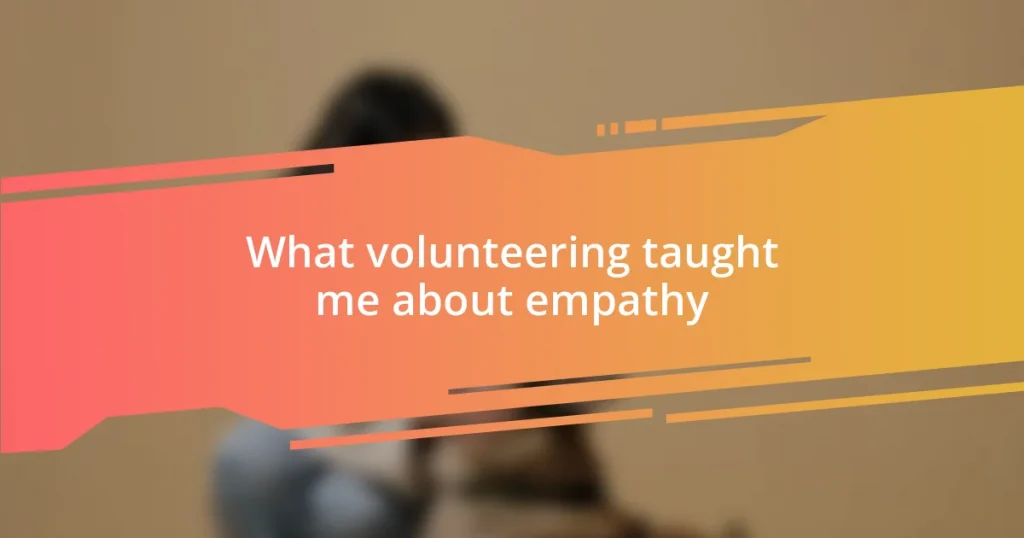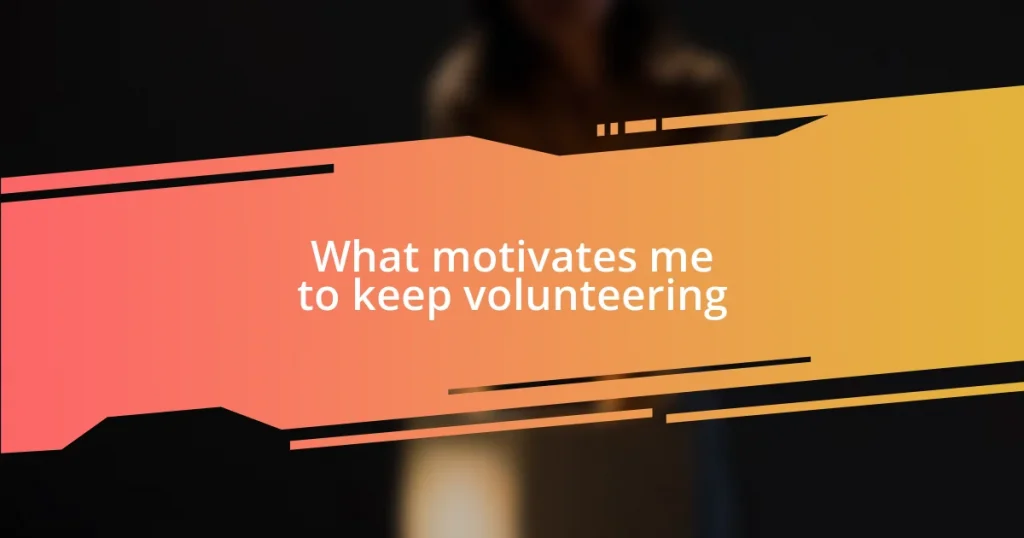Key takeaways:
- Understanding the profound emotional and psychological impacts of abuse is essential for supporting victims and communities.
- Creating a supportive environment through active listening, establishing boundaries, and fostering inclusivity can significantly aid in victims’ healing processes.
- Encouraging professional help and maintaining regular check-ins can empower victims and provide vital emotional support throughout their recovery journey.
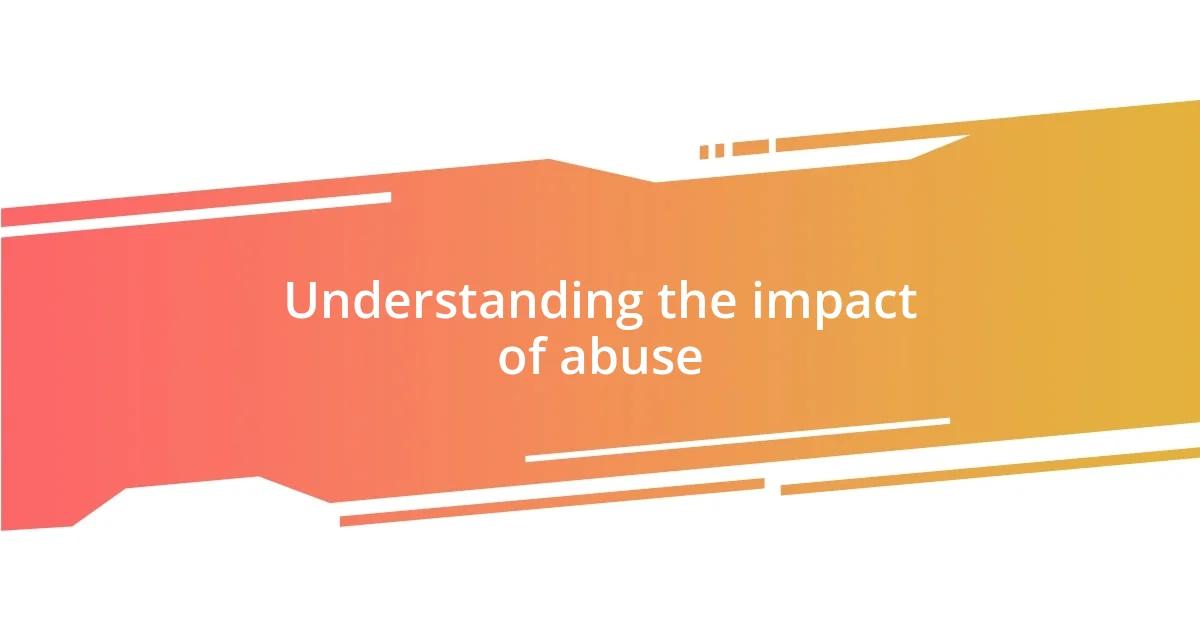
Understanding the impact of abuse
Understanding the impact of abuse is crucial for both victims and those who wish to support them. I once spoke with a survivor who described the emotional scars that linger long after the physical ones heal. Isn’t it astonishing to think how deeply abuse can affect someone’s mental health and self-esteem, often leading to feelings of isolation and confusion?
Victims frequently struggle with trust issues, making it difficult to form new relationships. I remember a close friend who, after experiencing emotional abuse, found herself second-guessing every intention, even from those closest to her. How do we expect someone to open up when their history has taught them that vulnerability can lead to pain?
Moreover, the impact of abuse isn’t just confined to the individual; it ripples through families and communities. I’ve seen how the trauma can leave parents unable to provide the nurturing environment their children need, trapping them in a cycle of dysfunction. Isn’t it heartbreaking to realize that the effects of such pain can extend far beyond the person who directly experienced it?
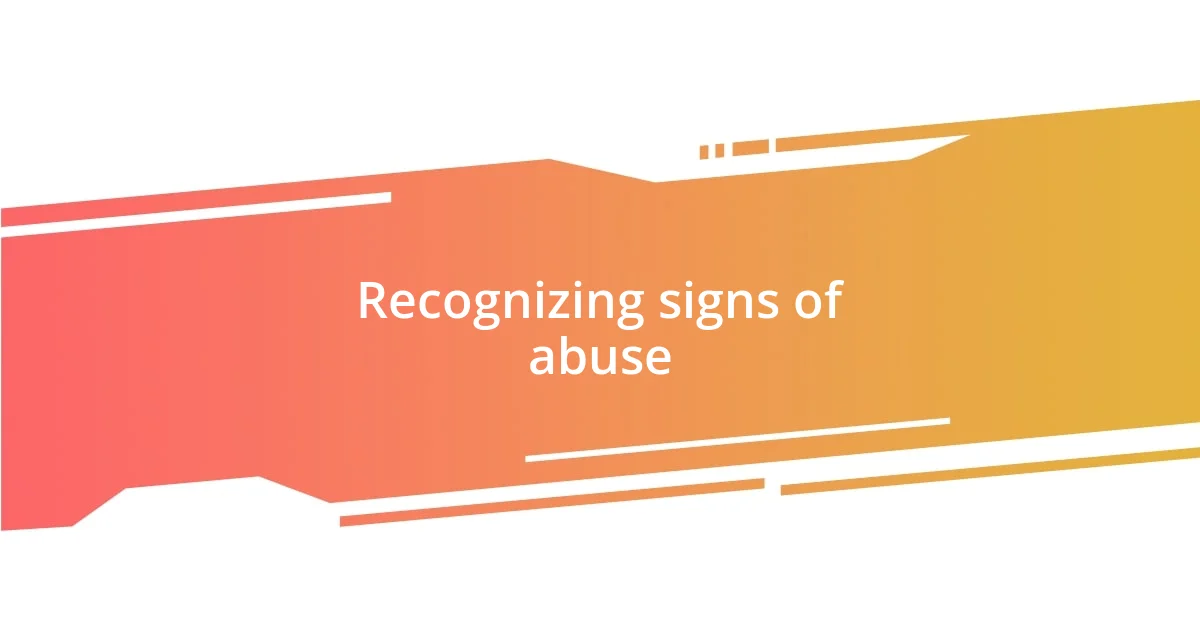
Recognizing signs of abuse
Recognizing the signs of abuse can be challenging, especially as they often manifest in subtle ways. I remember meeting a colleague who seemed withdrawn and jittery, her smiles a mere cover for deeper pain. The more I learned about her story, the more I realized how significant the signs can be when viewed through an empathetic lens.
Here are some key indicators to watch for:
- Withdrawal: A noticeable decline in social interactions or engaging less with friends and family.
- Behavioral changes: Sudden shifts in mood, such as increased anxiety, depression, or anger.
- Physical signs: Unexplained bruises, injuries, or signs of neglect in personal hygiene or appearance.
- Fearful reactions: An excessive fear of certain people or situations, or showing signs of anxiety when discussing relationships.
- Low self-esteem: Persistent feelings of worthlessness or guilt, often linked to verbal or emotional abuse.
These signs may vary widely among individuals, and understanding them is vital for offering the support they desperately need. I often find myself reflecting on how a small act of kindness can sometimes illuminate a path away from suffering for those entrenched in darkness.
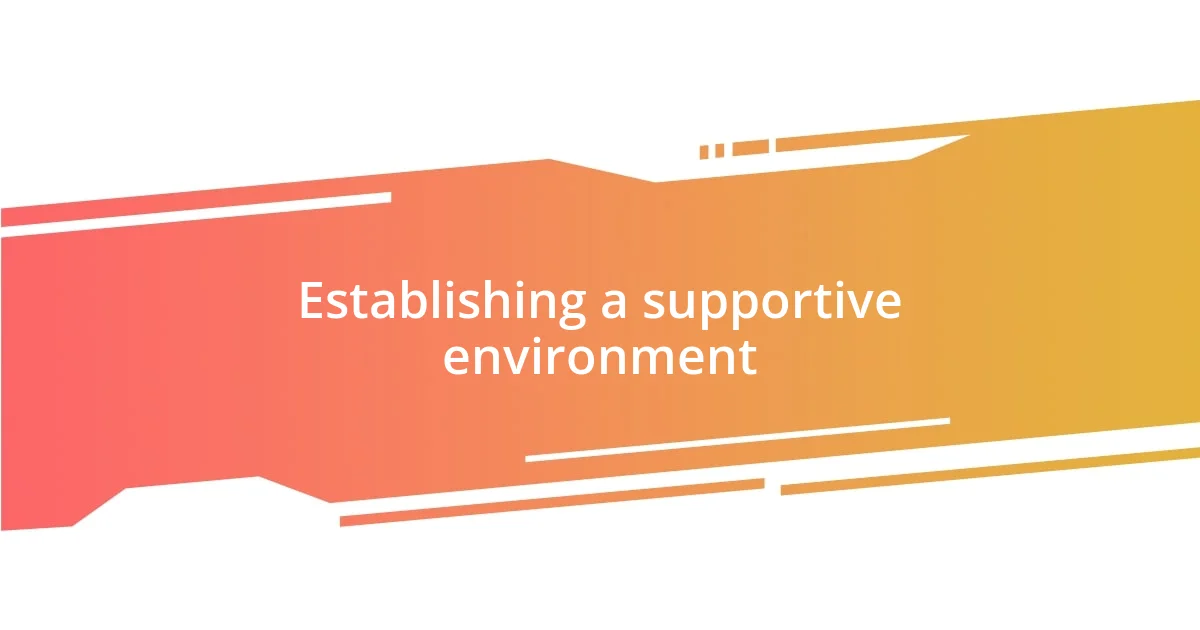
Establishing a supportive environment
Creating a supportive environment for victims of abuse is vital for their healing process. I recall a time when I hosted a small gathering with friends focused on openness and empathy. The atmosphere was relaxed, yet intentional, where everyone felt safe to share their experiences if they chose to. It amazed me how a simple gathering could become a sanctuary, encouraging others to voice their feelings without fear of judgment.
One practical aspect I’ve found helpful is establishing clear boundaries. When someone knows that their story is heard and respected, it fosters trust. I once had a conversation with a survivor who expressed that even the act of sitting in silence with someone who understands their pain can bring immense comfort. Communication is crucial here; simply asking, “What makes you feel safe?” can transform the dynamics of support.
Furthermore, an inclusive environment matters deeply. I try to blend different perspectives in conversations, ensuring that everyone feels valued. When we appreciate our differences, and share stories without comparisons or competition, we create a tapestry of support that can cover all vulnerabilities. This approach not only enriches understanding but often leads to profound connections between individuals, healing wounds that were previously thought to be too deep to mend.
| Supportive Actions | Impact on Victims |
|---|---|
| Creating Safe Spaces | Encourages openness and vulnerability. |
| Setting Clear Boundaries | Builds trust and reinforces respect. |
| Fostering Inclusivity | Enhances understanding and connection. |
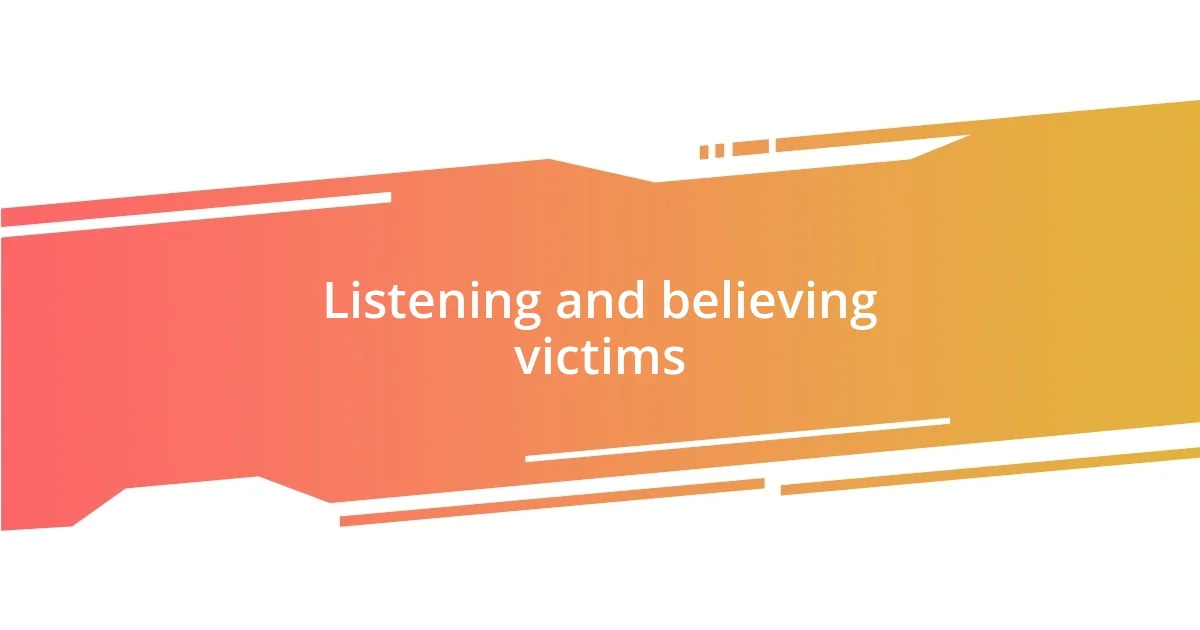
Listening and believing victims
Listening to and believing victims of abuse is a fundamental step in their healing journey. A few years ago, I was struck by a heartfelt moment when a friend disclosed her experiences. As she spoke, I noticed how vital it was to simply listen, to let her share her story without interruption. It made me realize that in those moments, believing her without question gave her the validation she desperately needed.
I often think about the power of those simple words: “I believe you.” There’s a profound comfort in knowing that someone will stand by you and acknowledge your pain. When I encouraged a relative to share her experiences without fear of judgment, I could see the weight lift off her shoulders. How often do we overlook the profound impact that truly listening can have on someone’s life? That one conversation reminded me that believing in someone’s truth is an act of profound support.
Equally important is the atmosphere in which we listen. I remember attending a support group meeting that focused on active listening exercises. It emphasized that validation means not just hearing, but also understanding and empathizing with their feelings. I realized that when victims feel heard, there’s a spark of hope that begins to ignite within them. Isn’t it incredible how just being present and genuinely engaged can begin to dismantle the barriers built by fear and shame?
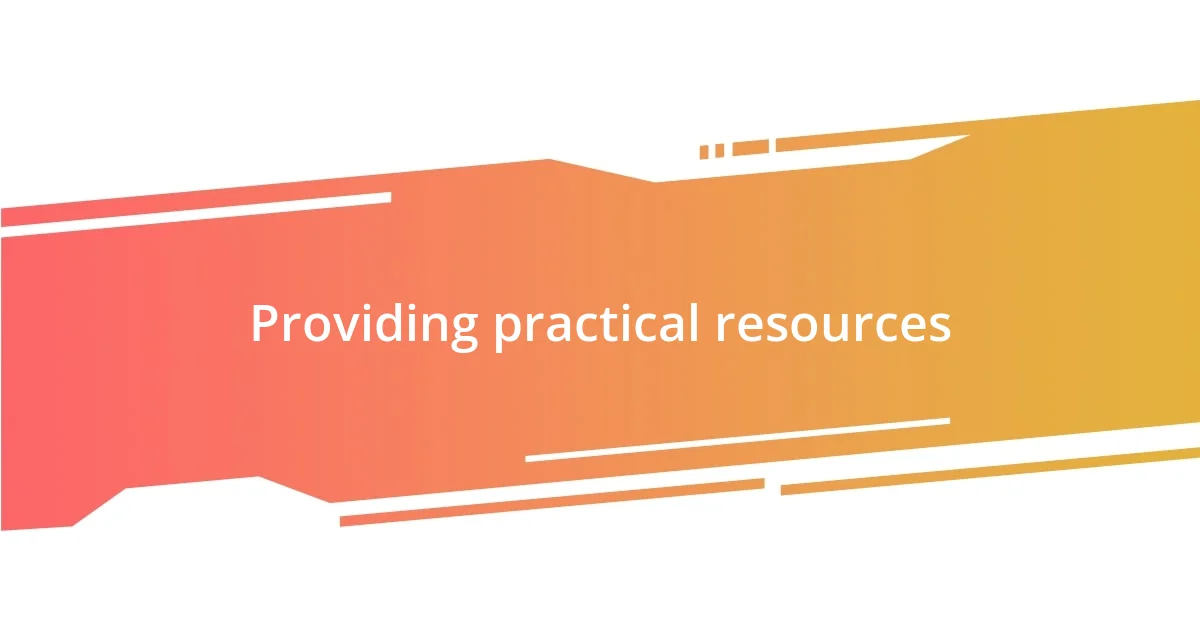
Providing practical resources
Providing practical resources is crucial for empowering victims and guiding them toward recovery. I vividly remember a time when a neighbor, who had just escaped an abusive situation, hesitated to reach out for help. I offered to help her find local shelters and counseling services, and it was enlightening to see how quickly that knowledge transformed her outlook. Resources like hotlines, support groups, and legal aid can bridge the gap between fear and action, allowing victims to make informed choices.
In my experience, accompanying someone to their first therapy session can be incredibly supportive. I did this for a close friend who was nervous about taking that step. I held her hand as we walked into the office, and just being there provided her with the courage she needed. When we offer to help navigate through bureaucratic processes or attend meetings together, it builds a foundation of trust and reassurance. Don’t you think having that extra support can make all the difference in uncertain moments?
Additionally, sharing informational pamphlets or online resources can be a gentle nudge toward recovery. I once distributed materials about legal rights and local clinics to a group at a community center. The relief on their faces spoke volumes; they finally felt they had actionable steps to take. It’s enlightening to see how easily accessible information can open doors that once seemed permanently closed, shedding light on pathways to safety and healing. Each time I’ve been able to help someone find these resources, I’ve felt a surge of hope—for them and for myself.
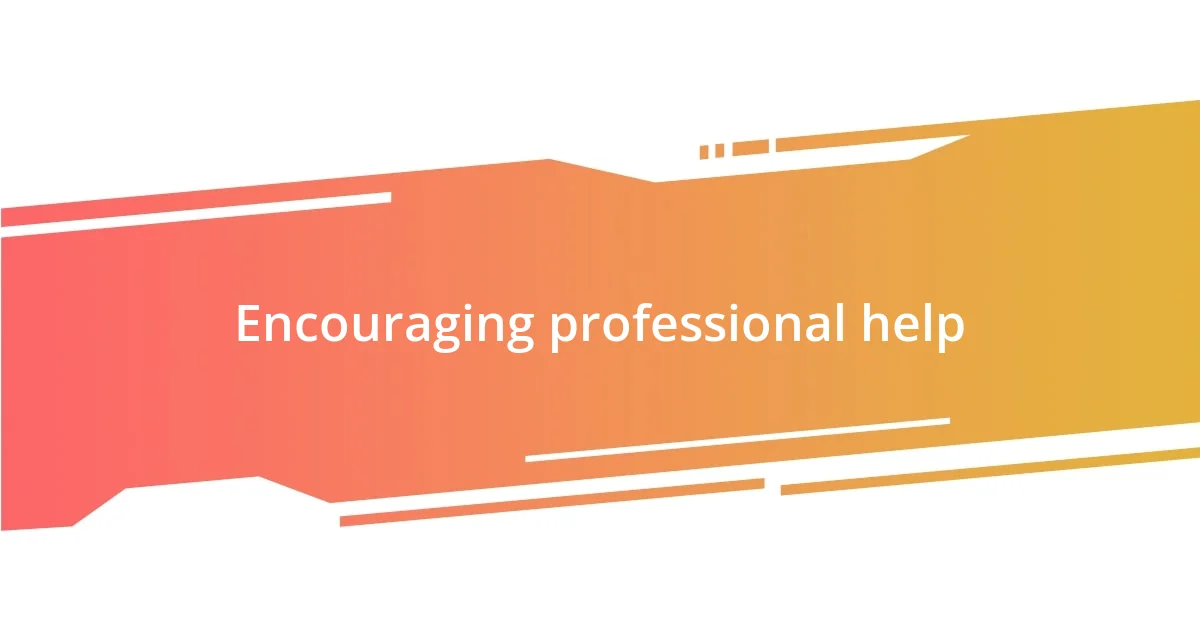
Encouraging professional help
Encouraging professional help is one of the most important steps in supporting victims of abuse. I remember a time when I gently nudged a friend to seek therapy after she shared her distressing experience; I told her, “Talking to someone who understands can really help.” Seeing her open up to a professional later was like witnessing a light dawn—her relief was palpable as she started to unpack her feelings in a safe environment.
Sometimes, the significance of professional help can be hard to convey. I once sat with a colleague who feared stigma; I reassured her that seeking help isn’t a sign of weakness, but rather a courageous step towards healing. Isn’t it remarkable how just normalizing therapy can shift perspectives? It’s these reassuring conversations that can instill hope and help victims recognize that there’s nothing shameful in asking for support from trained professionals.
I’ve also discovered that connecting people with counseling resources can be profoundly impactful. When I helped a relative contact a therapist, I noted how empowered she felt taking that step. It was as if she finally had a lifeline to cling to. Have you ever seen someone transform when they realize they’re not alone in this fight? That moment of realization can catalyze a journey of recovery that feels both daunting and yet filled with possibilities.
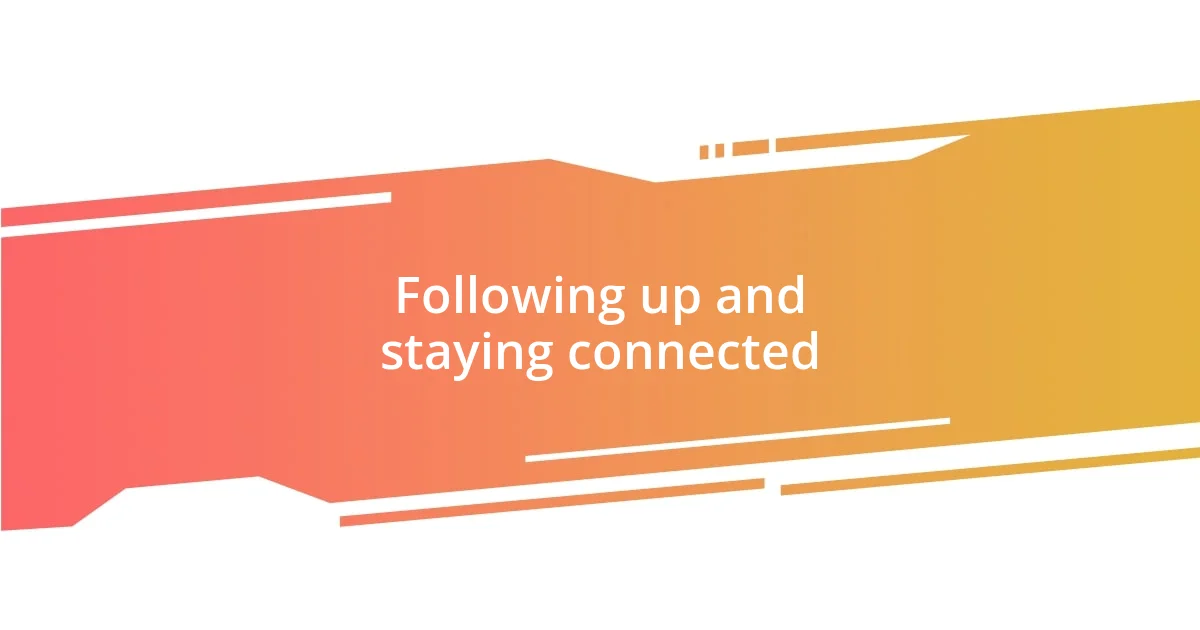
Following up and staying connected
Staying connected with victims of abuse is essential in their healing journey. One time, after helping a friend escape an abusive relationship, I made it a point to check in regularly. I’d send her a simple text, just asking, “How are you today?” Those little moments of connection were powerful, reminding her that she wasn’t alone and that someone cared deeply about her well-being.
I’ve found that following up can open doors to deeper conversations. There was a time when I reached out to a woman who had attended a support group I facilitated. As we talked, she expressed that she had begun contemplating her next steps, but felt overwhelmed. I offered encouragement, sharing my own experience of taking it one day at a time. Isn’t it amazing how just being there can help someone gain clarity in their chaotic world?
Moreover, I think establishing a routine of support can foster a sense of stability. After a colleague confided in me about her abusive partner, I initiated a weekly coffee catch-up. It was more than just tea and pastries; it became a safe space where she could share her fears and dreams without judgment. Has anyone ever provided you with a consistent support system? It can be an anchor, making the tumultuous journey towards recovery feel just a bit more manageable.

